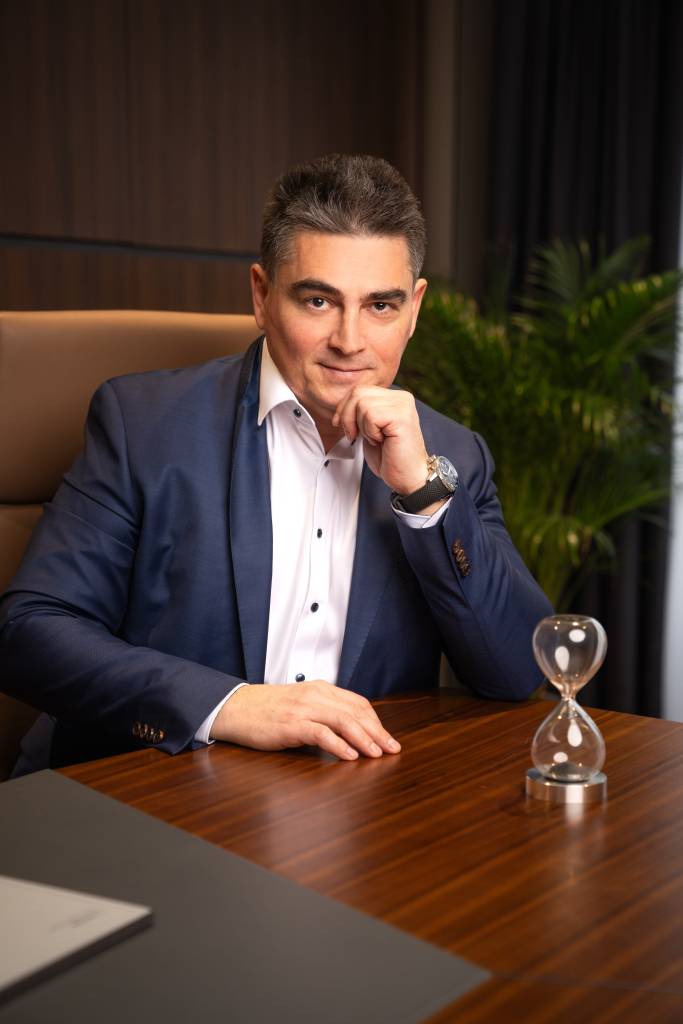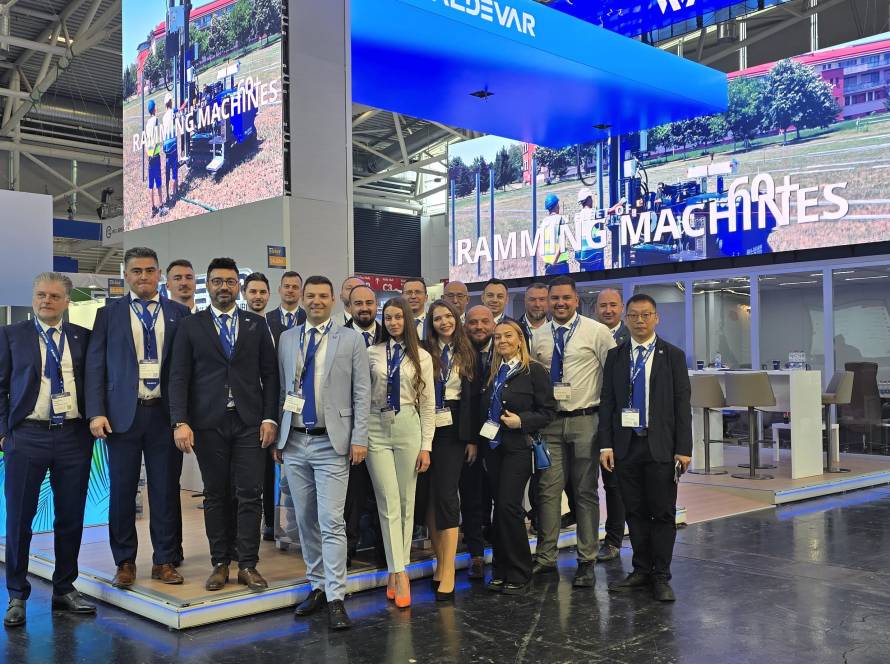Quelle: Der Diplomat
INTERVIEW Christian Leonte, WALDEVAR Holding: “We target regional leadership in Central and Eastern Europe on long term”
“By 2025-2026, we are ready to deliver up to 2.25 GWp in 50 new PV parks. We will strengthen our presence in Europe but looking at the same time more closely to the US and the North of Africa
We will open the first subsidiaries outside Europe in the coming months. On longer term we target regional leadership in Central and Eastern Europe, and we will implement own smart energy management technologies SCADA – EMS,” Christian Leonte, CEO WALDEVAR Holding told The Diplomat-Bucharest.
What have been the most significant operational challenges WALDEVAR faced during its rapid expansion, particularly in scaling from local to international markets?
WALDEVAR has had to build significant operational capacity, growing to a team of over 1000 skilled professionals and a significant dedicated fleet of specialized vehicles to support the operations at home and abroad. Managing this workforce expansion across different countries with varying labour regulations and cultural contexts presents ongoing challenges. So far, we have managed to adapt to the local context in many countries and different continents. WALDEVAR’s expansion story reflects broader challenges in the renewable energy sector, where one must balance rapid growth with supply chain reliability, regulatory compliance across multiple jurisdictions, and the technical complexity of large-scale renewable energy projects.

In your opinion, what are the biggest risks currently facing the renewable energy sector in Romania and across Europe?
Romania & Europe face a triple challenge. We need to reduce the dependences on imports, equipment from China and oil and gas from elsewhere, to accelerate reaching of the climate commitments without a negative impact to the economy and lower the energy prices by increasing renewable production capacity and help reindustrialization and electrification.
Apart from the economic and financial risks derived by the political and economic context like inflation effect on the price of materials and the rising interest rates we remark the increasing need for capable EPC companies to deliver the many large renewable energy projects that are about to start. This is becoming the next major bottleneck in the realization of new production capacities. The insufficient grid capacity to connect new projects is a continued threat to the development of the renewable energy. The increasing delivery times for critical components like transformers and the increasing price for major components like the PV modules negatively impact the business models that were already very competitive. Let’s add to this significant list the cybersecurity risks and the extreme weather and we see the complexity of the factors to be dealt with . Last but not least, the volatility of the energy price together with the more often occurrence of the negative prices is not helping the appetite of the investors for new projects.
WALDEVAR surpassed 1.5 GW of installed capacity. What are the company’s strategic targets over the next 3 to 5 years?
By 2025-2026, we are ready to deliver up to 2.25 GWp in 50 new PV parks. We will strengthen our presence in Europe but looking at the same time more closely to the US and the North of Africa
We will open the first subsidiaries outside Europe in the coming months. On longer term we target regional leadership in Central and Eastern Europe, and we will implement own smart energy management technologies SCADA – EMS.
What drove the decision to invest €10 million into the floating PV factory, and what return on investment do you anticipate?
We cannot speak about the ROI figures, but we can mention the huge potential that is generally offered by the water bodies and the substantial advantages given by this alternative to the usual utility scale PVPPs that we became used with. It is true that in Europe Floating PV is still seen as an exotic investment, but if we look at the Asian market, the exponential growth of the FPV market is certainly a trend that will impact our market.
The investment allows WALDEVAR to control their supply chain and reduce dependency on imports, particularly important given the supply chain challenges the renewable energy sector has faced. In partnership with global leader Sungrow FPV, we are building the only FPV systems factory in Europe, located in Tunari on a 40,000 m2 large site, conveniently located and giving us a significant competitive advantage. As an important milestone, we have recently signed the contract for the largest photovoltaic floating system installed on a hydroelectric dam in Europe with Hidroelectrica. This is a pilot project that paves the way for many more to come, in Romania and abroad. Another FPV project is about to be started by us in France in the coming months.
FPV systems eliminate competition with agriculture, urban development, or natural habitats, reduce evaporation rates FPV systems can reduce algae growth by blocking sunlight, potentially improving water quality in reservoirs, and reducing the need for chemical treatments. Water’s natural cooling effect keeps panels at lower operating temperatures, improving efficiency by 5-15% compared to ground-mounted systems and have less airborne dust and debris, meaning panels stay cleaner longer and require less maintenance cleaning compared to ground-mounted installations in dusty environments. Many water bodies (reservoirs, industrial cooling ponds, irrigation systems) are located near population centers or industrial facilities, reducing transmission costs and line losses. When installed on hydroelectric reservoirs, FPV systems can share existing grid infrastructure and benefit from complementary generation patterns – solar during the day, hydro for peak demand and storage.
FPV systems can be removed without permanent environmental impact, unlike ground-mounted systems that may permanently alter land use.
Is WALDEVAR planning to expand its investment portfolio into energy storage, hydrogen, or other complementary technologies?
Shortly yes. We plan to stay, as we do with Floating PV, at the forefront of the industry through innovation, mainly digital, and future oriented thinking. We are already implementing many BESS projects, becoming a first address for this type of project too. Hydrogen will probably come later, as this is conditioned by the necessary transportation infrastructure.
What leadership principles do you consider essential when managing large-scale energy projects and international teams?
A long-term perspective is necessary, needing to maintain vision while adapting to changing market conditions, regulations, and technologies. Clear vision setting and communication are paramount to successful operation. Decisive action under pressure is critical as the projects are very dynamic and subject to many risks. Finally, extremely important is the team building by recognizing talent, enabling collaboration and teamwork, enforce delegation and empowerment.
Energy projects involve utilities, regulators, communities, investors, contractors, and governments. Leaders must orchestrate these diverse interests while maintaining project momentum.
Cultural intelligence and adaptive leadership are critical since international energy projects require understanding how different cultures approach time, hierarchy, decision-making, and risk. What works in Germany may not work in Romania or Poland, even within the EU framework.




